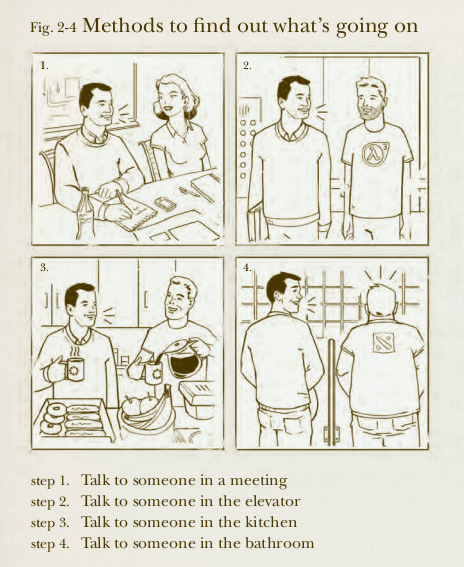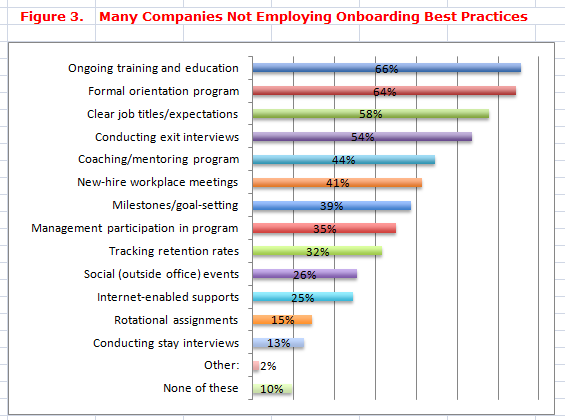Trends in Onboarding and Retention in 2013
(Editor’s Note: Today’s post is brought to you by Allied Van Lines®, a leader in the moving and storage industry with more than 75 years of experience. For a second year, they are championing a research project, Allied HRIQ, aimed to provide business professionals with data on current workforce trends. We also have an exciting LinkedIn group~ Allied HR IQ~ where HR professionals can network and share ideas about happenings in the HR space. I encourage you to join today! I have partnered with Allied Van Lines® in the past and am excited about this year’s survey results.)
Trying to find and then take the time to make sense of and look for valuable and relevant takeaways from the multitude of research and surveys about the workplace, talent management, and management trends can be quite challenging for most of us with busy, full schedules. And the folks at Allied get this, which is why they have asked HR bloggers like myself, Trish McFarlane, and Sharlyn Lauby to jump in and not only take a look at the recently completed data from the Allied HR IQ survey, but also to highlight what we felt like were some of the most interesting and important findings.
As Sharlyn shared earlier this summer, the Allied HR IQ survey put out some great information on telecommuting. Give her article a read because, as we all know, this issue is still on the minds of many professionals. And later in the year, Trish examined the recruiting and relocation survey focus areas in her piece here.
I’ve been asked to look at the onboarding and retention components of the survey results. I have to tell you, the full survey results are well worth your time to read, but in case you’re pressed for time, here are my key takeaways on these important topics:
Onboarding:
Some key findings from the data about new employee onboarding:
While onboarding is usually ‘owned’ by HR, (83% either led by corporate HR and/or Unit HR), there is usually not a specific budget allocated for the process, with 87% of respondents indicating that onboarding costs were simply baked in to overall HR spend.
In onboarding, success is not totally tied to the size of an organization’s budget - companies that evaluated their onboarding process as ‘Highly Successful’ spent, on average, over 50% less than companies rating themselves only ‘Somewhat Successful.’ However both groups spent significantly more on onboarding than the ‘Not Successful’ group.
Highly successful onboarding programs distinguished themselves in several ways - by clearly communicating employee expectations, incorporating formal and informal coaching and mentoring programs, and encompassing senior and line managerial participation in the onboarding process.
Finally, and perhaps the most interesting data point related to onboarding, respondents indicated it takes about 8 months for new hires to be fully productive in the organization, a time horizon that did not vary much no matter how small or large the organization.
What can you take away from these findings?
Clearly, the best onboarding programs are ones that maintain a high degree of personalization, i.e., where the individual employee needs and situation are being considered and valued. Elements like specific goals and expectations, a high degree of managerial and leadership involvement, and the realization that onboarding should start sooner (even before the first day on the job) and last longer are just some of the hallmarks of successful programs. As we will see in the data about employee retention, a successful employee onboarding experience will pay dividends far into the future, and will clearly provide a fantastic return on investment.
Turning our attention to the Retention portion of the study...
Retention
Similarly, several interesting findings were revealed from the survey respondents’ assessment of their retention strategies and their success (or shortcomings).
The Allied HRIQ survey participants indicated that only 76% of their new hires remained with the organization for one full year. Given the 8-month time to productivity finding from above, losing a full quarter of new hires before one year is kind of a distressing statistic.
To build upon the first point, only 62% of new hires who were retained for a full year were viewed as ‘Meeting or surpassing expectations,’ meaning 38% were performing at a sub-optimal level.
Why are so many new hires leaving before one year? Not surprisingly, the number one factor reported by the survey respondents was the employee’s ‘Relationship with their manager.’ This finding supports that often-repeated maxim that ‘People join companies, but they leave managers.’ Career advancement opportunities ranked next on the list of leaving reasons, reminding us that even new employees are concerned about their future career prospects with the organization.
Lastly, many companies, even quite large ones, are not doing a good enough job of asking and assessing executives’ willingness to relocate, even while reporting that this willingness and ability to actually relocate is an important factor for their advancement opportunities.
There are several interesting implications of the retention data from the Allied HRIQ survey, but if I could focus in on one element, it would have to be the level and attention of the employee’s direct manager and how that affects outcomes. As we saw in the onboarding data, a high level of managerial involvement led to better onboarding programs. And this type of attention and personalized development and management seems to also have a profound influence on retention. The data suggest that the most important factor in an employee’s first months with the organization is the relationship they have with their manager. So smart HR leaders will strive to ensure they work closely with these critically important managers to provide them the tools, resources, and capability they need to effectively guide new employees in their first months with the organization.
Final thoughts
Onboarding and retention will continue to be two necessary and important functions for the HR leader, and while most organizations feel like they are doing at least an adequate job in these areas, as the Allied HRIQ survey reveals, there is always room for improvement.
I encourage you to check out the full Allied HRIQ survey results here, where you will find lots more information and insight that can help to make your onboarding and retention efforts even more effective.
 Research,
Research,  learning,
learning,  onboarding tagged
onboarding tagged  allied,
allied,  onboarding,
onboarding,  retention,
retention,  surveys
surveys  Email Article
Email Article 
 Print Article
Print Article 



